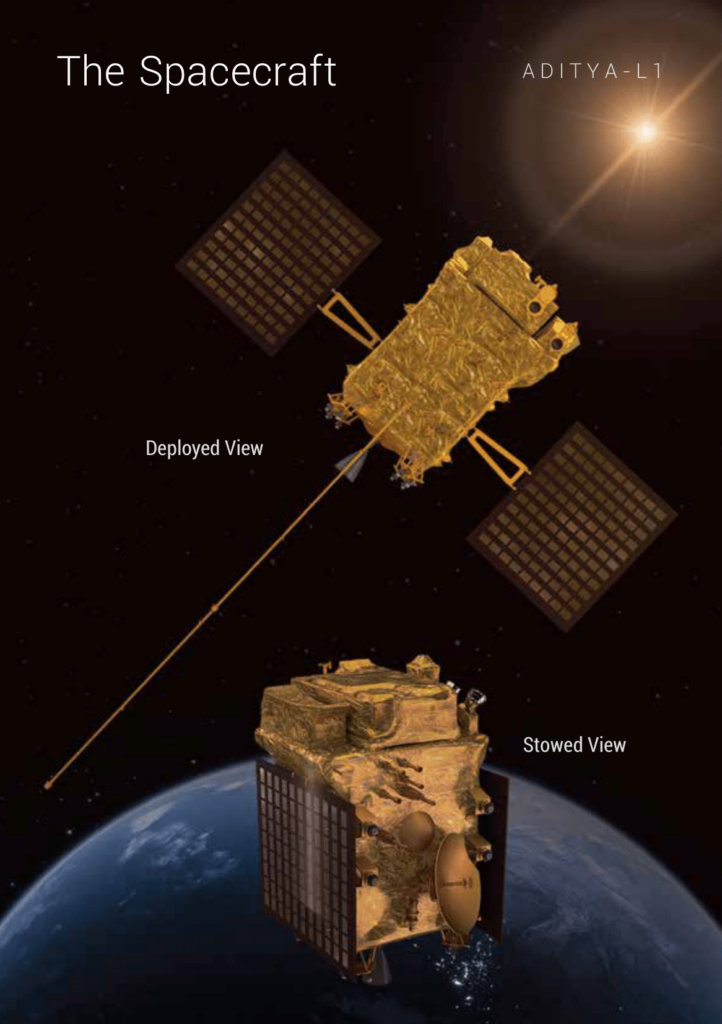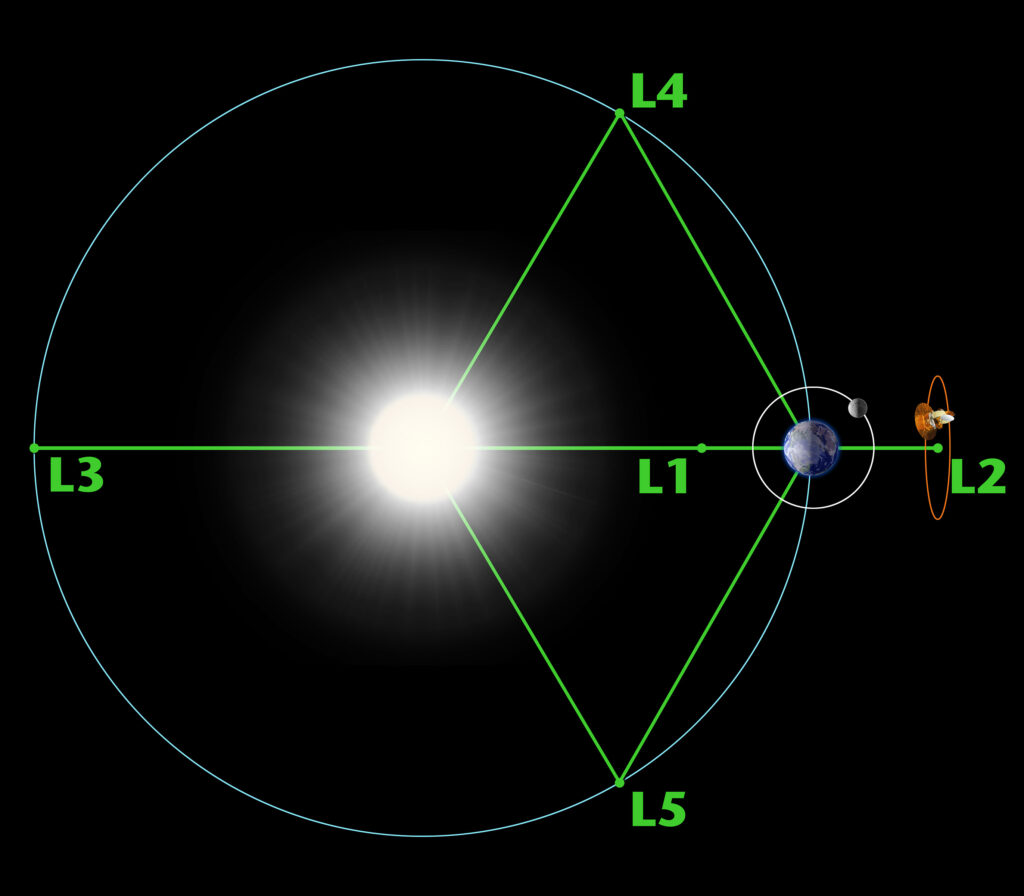Introduction about Aditya-L1
The Sun, our celestial powerhouse, has captivated human curiosity for millennia. It’s the source of light, warmth, and life on Earth, but it also holds mysteries that have long eluded our understanding. Enter the Indian Space Research Organization (ISRO) and their ambitious Aditya-L1 Sun Mission, a groundbreaking endeavor set to unravel the enigmas of our nearest star.
Aditya-L1, which is named after the Sun God in Hindu mythology, is tipped to make history in the field of solar science. The corona, the Sun’s outermost layer, where its temperature defies reason and soars higher than its surface, is the subject of the mission’s examination. Aditya-L1 is prepared to look for solutions to the many concerns raised about the Sun’s behavior by this scientific conundrum.
Scientists will be able to investigate the Sun’s corona with unparalleled accuracy thanks to Aditya-L1. Researchers want to improve our comprehension of solar storms and their possible influence on Earth by investigating its magnetic fields and dynamic features.
Additionally, the project holds the possibility of changing space weather forecasting, which would be advantageous for everyone on Earth, not just India. Aditya-L1 is a crucial step in securing our technological infrastructure because solar eruptions can interfere with satellite communications, GPS, and even power grids.
A new era in solar science is about to begin as we wait for the launch of Aditya-L1. The Sun’s secrets will be revealed by ISRO’s mission, adding to our understanding of the universe and improving our capacity to deal with the difficulties of Earthly life. Aditya-L1 is about to make the Sun, our regular companion in the sky, a bit less mysterious.
Keep checking back for updates on this fascinating trip deep inside our solar system.
Aditya-L1 The ISRO Space Mission to Study Sun.
It is a Prestigious project of ISRO and also a milestone in the space field.
Aditya L1 is the first Indian solar mission of the class of a space-based observatory.
It is intended to orbit the Lagrangian point 1 (L1) in a ring around the spacecraft.
a distance of around 1.5 million kilometers from the Earth of the Sun-Earth system. an object put into halo orbit
the Sun can be observed continually without being obscured by anything around the L1 point.
eclipse. The benefit of continuously studying solar activity will increase as a result. The
Seven payloads are carried by the spacecraft to study the photosphere, chromosphere, and outermost layers.
employing electromagnetic and particle detectors, of the Sun (the corona). Four payloads use the unique vantage position of L1 to observe the Sun directly, while the remaining three payloads do in-depth research on particles and fields there.
In order to comprehend issues with coronal heating, Coronal Mass Ejection, pre-flare and flare activities, and their characteristics, dynamics of space weather, study of the propagation of particles, and fields in the interplanetary medium, etc., the Aditya L1 payloads are expected to provide the most important information.
Photo Source : ISRO

Science Objectives:
The major science objectives of Aditya-L1 mission are:
Source: ISRO
Study of Solar upper atmospheric (chromosphere and corona) dynamics.
Study of chromospheric and coronal heating, physics of the partially ionized plasma, initiation of the coronal mass ejections, and flares
Observe the in-situ particle and plasma environment providing data for the study of particle dynamics from the Sun.
Physics of solar corona and its heating mechanism.
Diagnostics of the coronal and coronal loops plasma: Temperature, velocity and density.
Development, dynamics and origin of CMEs.
Identify the sequence of processes that occur at multiple layers (chromosphere, base and extended corona) which eventually leads to solar eruptive events.
Magnetic field topology and magnetic field measurements in the solar corona .
The instruments of Aditya-L1 are tuned to observe the solar atmosphere mainly the chromosphere and corona.
In-situ instruments will observe the local environment at L1. There are total seven payloads on-board with four
of them carrying out remote sensing of the Sun and three of them carrying in-situ observation.
Payloads along with their major capability of scientific investigation.
What is Lagrange Points:
Source : NASA
Lagrange points are positions in space where objects sent there tend to stay put. At Lagrange points, the gravitational pull of two large masses precisely equals the centripetal force required for a small object to move with them. These points in space can be used by spacecraft to reduce fuel consumption needed to remain in position.
Lagrange Points are positions in space where the gravitational forces of a two body system like the Sun and the Earth produce enhanced regions of attraction and repulsion. These can be used by spacecraft to reduce fuel consumption needed to remain in position.
The five Lagrange points are labelled and defined as follows:
L1 point. The L1 point lies on the line defined between the two large masses M1 and M2. It is the point where the gravitational attraction of M2 and that of M1 combine to produce an equilibrium. …
L2 point. … is ideal for astronomy because a spacecraft is close enough to readily communicate with Earth, can keep Sun, Earth and Moon behind the spacecraft for solar power and (with appropriate shielding) provides a clear view of deep space for our telescopes
L3 point. … point since it remains hidden behind the Sun at all times. The idea of a hidden planet has been a popular topic in science fiction writing.
L4 and L5 points. … The L4 and L5 points are home to stable orbits so long as the mass ratio between the two large masses exceeds 24.96. This condition is satisfied for both the Earth-Sun and Earth-Moon systems, and for many other pairs of bodies in the solar system
Source Photo : NASA

Aditya L1 solar mission’s A Long 1.5 million km journey over four months
Aditya L1’s mission is to put the spacecraft in a “halo orbit” around the Sun-Earth system’s Lagrange point 1, or L1, which is located roughly 1.5 million kilometers away from the Earth. ISRO will use the project to investigate how solar activity affects space weather in real time. Understanding “coronal heating, coronal mass ejection, pre-flare and flare activities and their characteristics, dynamics of space weather, propagation of particles and fields, etc.,” according to the space agency, is one of the unmanned mission’s other main goals.
According to ISRO, it will take roughly four months to travel the staggering 1.5 million kilometers to the planned mission site.
The spacecraft will first be positioned in a low earth orbit, according to an explanation from the ISRO on its website.
The spacecraft will then use onboard propulsion to accelerate toward the Lagrange point L1 as its orbit becomes more elliptical, according to the statement. Aditya L1 will leave the earth’s gravitational Sphere of Influence as it moves toward L1. After exiting it, the craft will enter its “cruise phase” and be injected into a massive halo orbit around L1. Aditya-L1 would take around four months to travel from launch to L1, according to the ISRO.
You can also about Hello world
Conclusion :
Unveiling the Mysteries of Our Solar Sentinel: Aditya-L1 Mission Concludes with a Promise of Enlightenment
As we conclude our exploration of ISRO’s Aditya-L1 Sun Mission, we stand on the cusp of a groundbreaking chapter in solar science. This mission’s audacious goal of uncovering the Sun’s secrets has the potential to reshape our understanding of not just our local star, but also the broader cosmos and our place within it.
The journey to launch Aditya-L1 has been one of determination, innovation, and collaboration. ISRO’s dedication to pushing the boundaries of technological capability is evident in the cutting-edge instruments aboard the spacecraft, poised to capture images and data that were once deemed unattainable. The global scientific community eagerly awaits the insights that will undoubtedly emerge from this bold venture.
From studying the mesmerizing dance of solar flares to comprehending the intricate interplay of magnetic fields, Aditya-L1 promises to transform theoretical knowledge into tangible breakthroughs. The potential to predict space weather with greater accuracy has far-reaching implications for safeguarding our increasingly interconnected world.
As we prepare for Aditya-L1’s launch and subsequent mission phases, we invite everyone to join in this journey of discovery. The Sun, a beacon of light and life, has long beckoned us with its mysteries. With ISRO’s unwavering commitment to unraveling those mysteries, Aditya-L1 stands as a testament to human curiosity, ingenuity, and our ceaseless quest to unravel the enigmas of the universe. The future shines brighter as we prepare to shine a light on the heart of our solar system.
